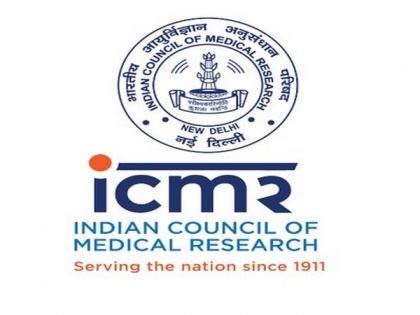Under-5, neonatal mortality rates drop substantially in India since 2000: ICMR study
By ANI | Published: May 12, 2020 04:56 PM2020-05-12T16:56:54+5:302020-05-12T17:10:09+5:30
A latest study published by Indian Council of Medical Research (ICMR) on child mortality and child growth failure in India from 2000 to 2017 has revealed that the under-5 mortality rate (U5MR) and neonatal mortality rate (NMR) have dropped substantially since 2000, but there is a 5-6 fold variation in the rates between the states and 8-11 fold variation between the districts of India.

Under-5, neonatal mortality rates drop substantially in India since 2000: ICMR study
A latest study published by Indian Council of Medical Research (ICMR) on child mortality and child growth failure in India from 2000 to 2017 has revealed that the under-5 mortality rate (U5MR) and neonatal mortality rate (NMR) have dropped substantially since 2000, but there is a 5-6 fold variation in the rates between the states and 8-11 fold variation between the districts of India.
The two important scientific papers on child survival are published by ICMR in collaboration with the Public Health Foundation of India (PHFI). The revelations of child mortality are published in The Lancet medical journal while EClinical Medicine has reported findings on Growth Failure in India.
The study stated that U5MR and NMR have been decreasing in almost all districts of India, but the progress in this decline has been highly variable because of which the inequality in these rates has increased between districts within many states.
"About 68 per cent of the under-5 deaths in India can be attributed to the child and maternal malnutrition, 83 per cent of the neonatal deaths to low birth weight and short gestation," noted the study.
Child growth failure, measured as stunting, wasting, and underweight has improved in India since 2000, but their rates vary 4-5 fold between the districts of India and the inequality between districts within many states has increased, stated the findings.
Prof Vinod Paul, Member of NITI Aayog said: "The research paper has shown that India has made positive strides in protecting the lives of newborns over the last two decades. The district-level data from this study will help in the planning and implementation of local action plans and set the course for further improvements in child mortality and child growth failure in India."
If the trends observed up to 2017 were to continue, India would meet the SDG 2030 U5MR target but not the SDG 2030 NMR target; 34 per cent of the districts in India would need higher U5MR reduction and 60 per cent districts would need higher NMR reduction to individually meet the SDG targets, the study highlighted.
The district-level child mortality and child growth failure trends in this report arrived at by using all accessible data sources from India provide the most comprehensive reference so far for further planning to improve child survival across India, pointed the study.
Prof Balram Bhargava, Director General, ICMR said, "This is India's first comprehensive analysis of sub-national trends of child mortality and growth failure for all the districts and states in India. Due to the government's efforts, under-five mortality rate has halved from 2000 to 2017. The district-level trends reported in these papers provide useful guidance for identifying priority districts in each state that need the highest attention. This approach can facilitate a further reduction in child mortality in India."
"The district-level analysis of child mortality and child growth failure reported provides robust evidence for policy to further improve child survival in India. Continuing this work, this year we are undertaking a comprehensive analysis of the disease burden caused by COVID-19 across India as well as district-level analyses of other indicators that are important for decentralised health planning to which India aspires," said Prof Lalit Dandona, senior author of the study and Director of the India State-Level Disease Burden Initiative.
( With inputs from ANI )
Open in app